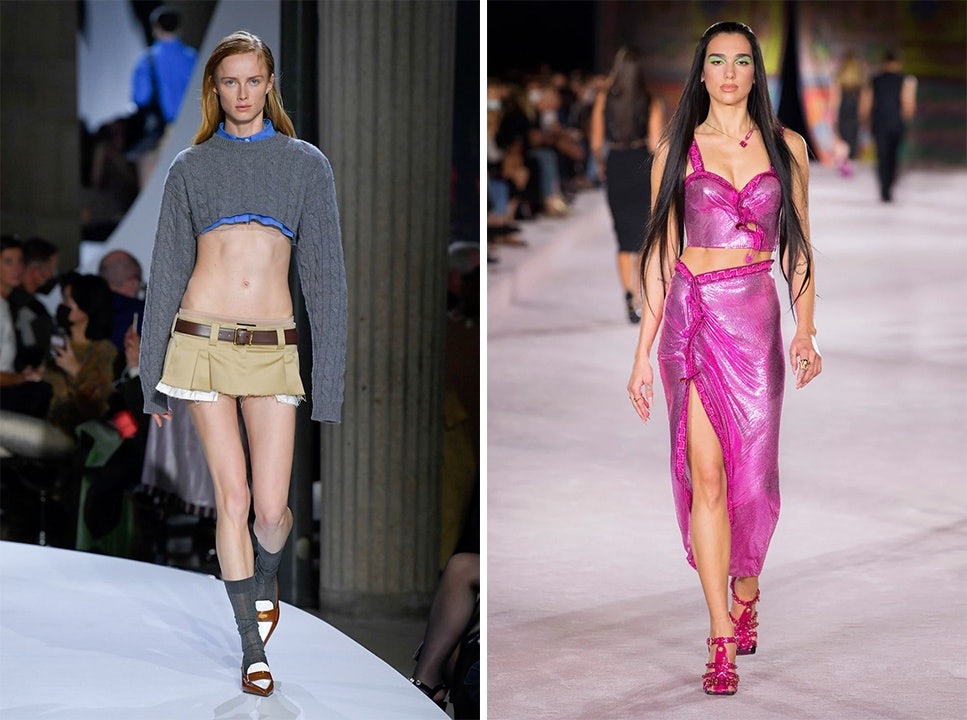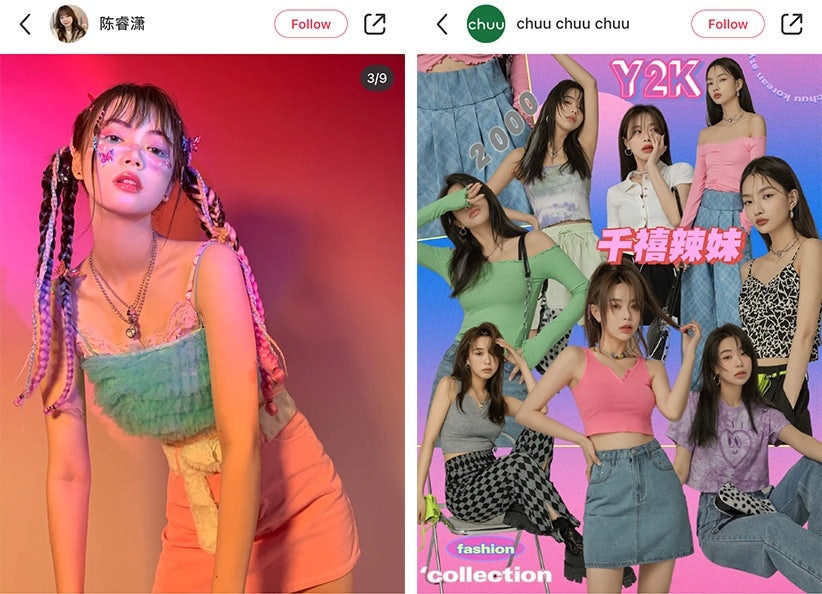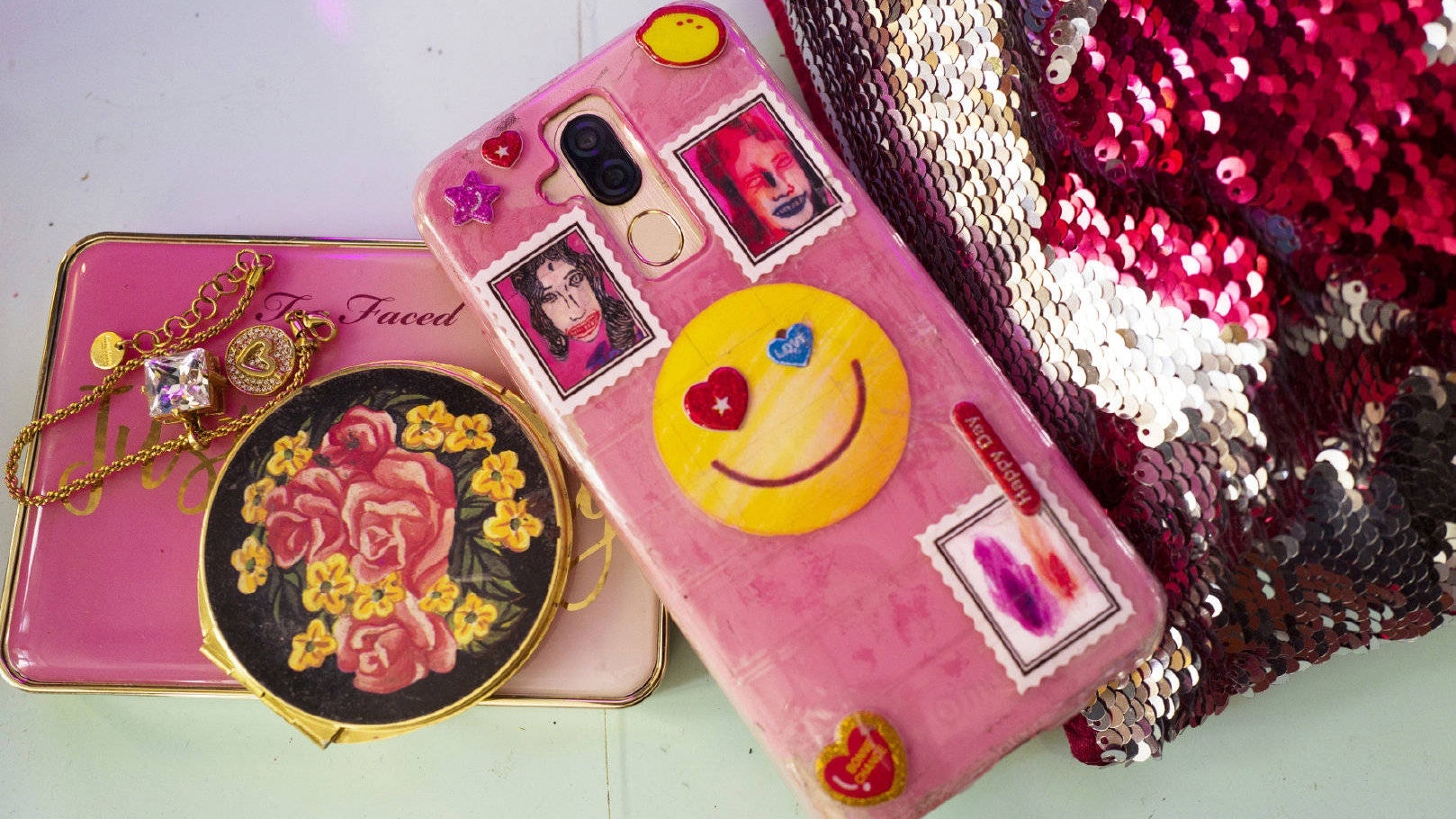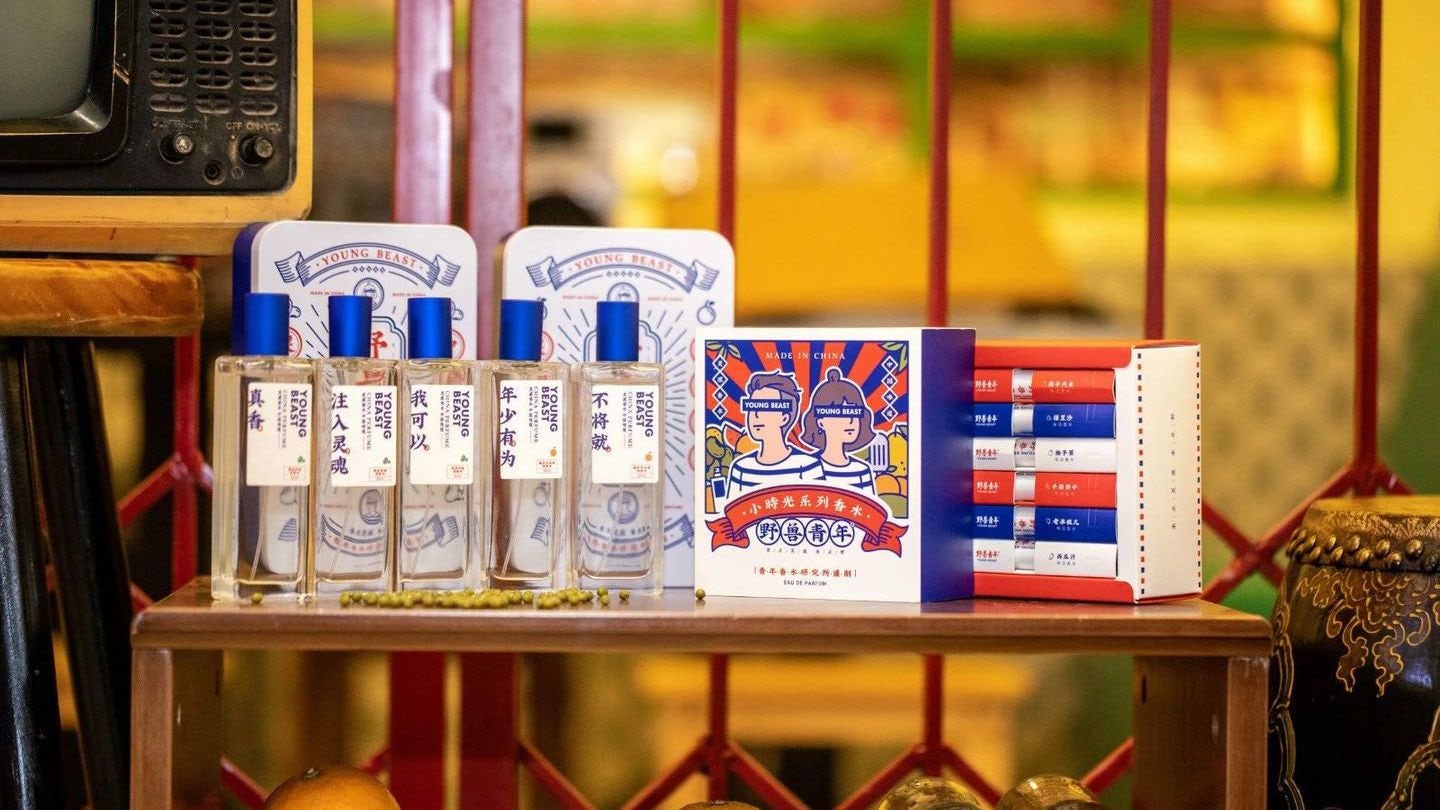Key Takeaways:#
In China, brands that embrace Y2K style trends can channel more Gen-Z purchasers. And top luxury Maisons like Saint Laurent, Miu Miu, and Versace have already presented these items on their Spring/Summer 2022 runways.
Thanks to the algorithms of TikTok and the lifestyle social platform Xiaohongashu (Little Red Book), nostalgic millennial styles have attracted millions of fans.
Young consumers' exploration of this nostalgic trend is about more than just luxury sales. It has become a way for Gen Zers to differentiate themselves from mainstream styles.
If you think Chinese Gen Zers are always chasing after “new” trends, then think again. Their revival of millennial trends has created a nostalgia frenzy, characterized by low-rise jeans, tennis skirts, printed T-shirts, colorful eyeshadows, and bejeweled accessories.
Deemed the “throwback economy” by many fashion observers, Y2K style has become a dominant theme with Chinese cool-kid consumers. After turning their focus onto vintage styles, these young fans fueled a countrywide thrifting boom. But instead of only purchasing used indie brands from the Y2K era, these young customers are also interested in buying classic replicas.
Gen Z, born between 1996 and 2010, makes up 17 percent of China’s population but 25 percent of total spending on new brands, according to US private equity company L Catterton’s latest consumer insights report on China. More than half (51 percent) of China’s Gen-Z consumers prefer brands that offer customized products, while 53 percent opt for brands that provide tailored services. This preference for uniqueness is much more pronounced in China than in other Asia-Pacific areas, per a luxury consumption survey released by McKinsey.
In China, brands that embrace such items can channel more Gen-Z purchasers. Top luxury Maisons like Saint Laurent, Miu Miu, and Versace presented Y2K items on their Spring/Summer 2022 runways, including miniskirts, low-rise pants, and scarf tops. Domestically, shoe labels like Dr. Martens, Casadei, and the designer brand Blumarine are becoming buzz words in Gen-Z social media chats. If you went to the recently-concluded Shanghai Fashion Week, you might have seen many Y2K hot chicks styled in a uniquely Chinese way.

“I'm hearing a lot about the 2000s style and am curious about the aesthetic during that period,” said Douyin (Chinese version TikTok) influencer Rose_Jiang. “I know some people who attended college in the early 2000s, but I don’t know how they dressed back then. Recently, I thrifted a Rachel Green bag and a Britney Spears beads necklace, which are incredibly pretty! [But] the concept of Gen Z wearing it is different: We are exploring the new possibilities of this style, trying not to be too mainstream at the same time.”
And now, the nostalgia trend has gained momentum on social media, as well. Thanks to the algorithms of TikTok and the lifestyle social platform Xiaohongshu (Little Red Book), nostalgia-themed makeup tutorials, styling videos, accessories DIY videos, and vintage livestreaming sales have attracted millions of fans. When Gen Z realizes that trends popular before the social media era are cool, they should embrace them even though social media is (ironically) the best way to do that.

Of course, the market has followed this trend by promoting nostalgia-related products, creating a huge buzz and business opportunities.
“This ‘throwback’ content can go viral very easily," said Lily Qin, a domestic consumption researcher in Shanghai. "With neon-colored filters and 2000s background music, this content fits Gen Zer appetites perfectly. They express themselves in various ways, and bonding to millennium style is a good choice, aesthetically and culturally.”
Indeed, young consumers' exploration of this nostalgia trend is about more than just luxury sales. It has triggered a new cultural phenomenon that unifies old aesthetics and a new lifestyle, becoming a way for Gen Zers to differentiate themselves from the mainstream. Business opportunities will surely evolve from this trend's momentum, from fashion IPs and crossover collaborations to indie designer labels and luxury NPCs.
There are many possibilities as China's Gen-Z market is multidimensional, diverse, and constantly changing.

